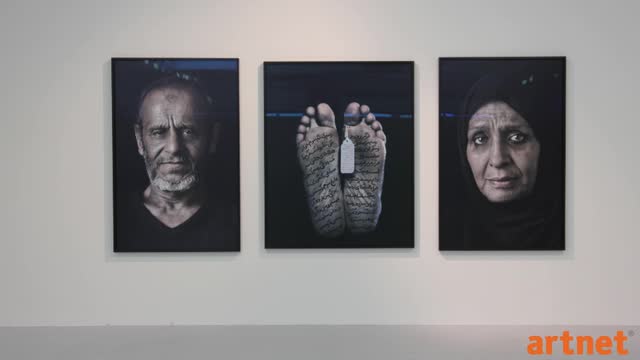
Shirin Neshat talks about her art, life and new body of work at the Robert Rauschenberg 19th Street Project Space in New York.
Neshat was recently commissioned by the Rauschenberg Foundation to create a body of work as part of the foundation’s One-to-One artist initiative, which supports artists working in response to social issues. Neshat’s series Our House is on Fire was inspired by her time spent in Egypt in the aftermath of the recent revolution. Like many of Neshat’s works, this series consists of portraits and details of hands and feet, capturing emotions that are at once individual and universal. The closeup portraits harness what Neshat refers to as the “power in human expression,” in which the individual gaze creates a connection between viewer and subject, between personal narrative and the collective human experience.
Neshat was born in Qazvin, Iran, in 1957, and at 17 left the country to study art in the United States; she graduated from the University of California, Berkeley with an MFA in 1982. When she returned to Iran in 1990, she found it barely recognizable from the country she had known before the 1979 Revolution that would inspire her meditations on memory, loss, and contemporary life in Iran so central to her work. Her videos, installations, and photographs have received international critical acclaim. Her work has been exhibited at the Venice Biennale, the Istanbul and Johannesburg Biennials, the Art Institute of Chicago, the Whitney Museum of American Art in New York, and the Tate Gallery in London, among other institutions. In January Neshat received a Crystal Award at the World Economic Forum in Davos, Switzerland.